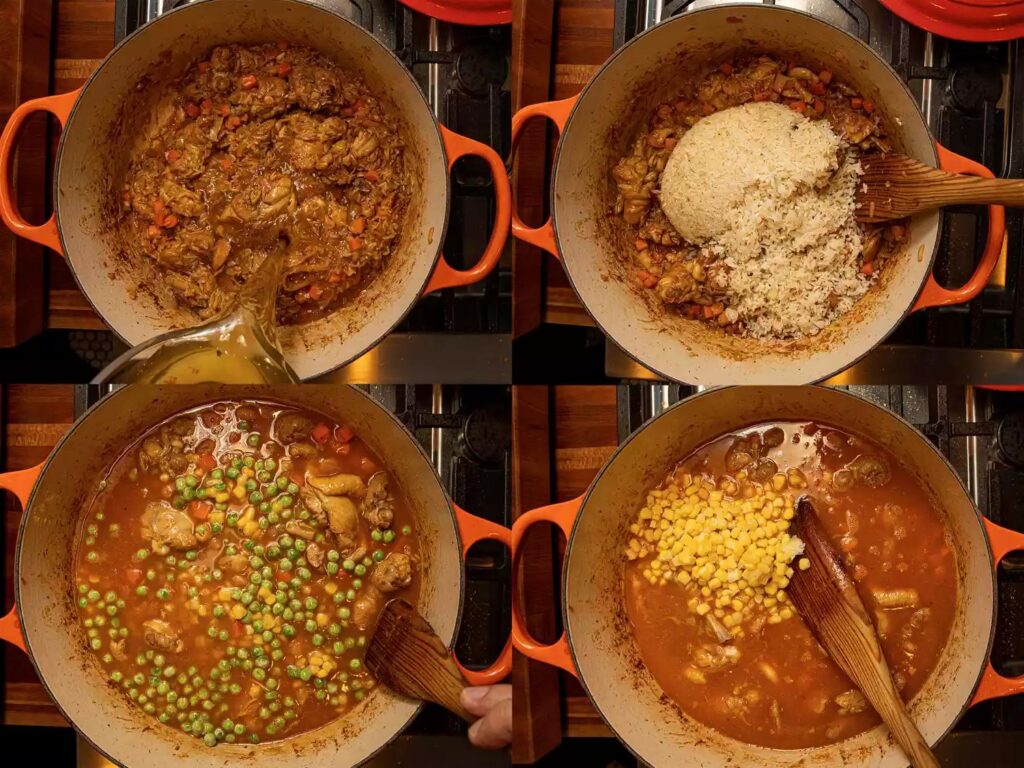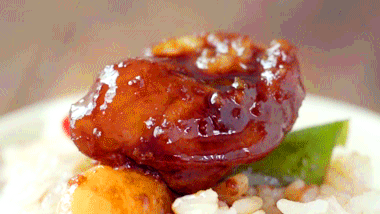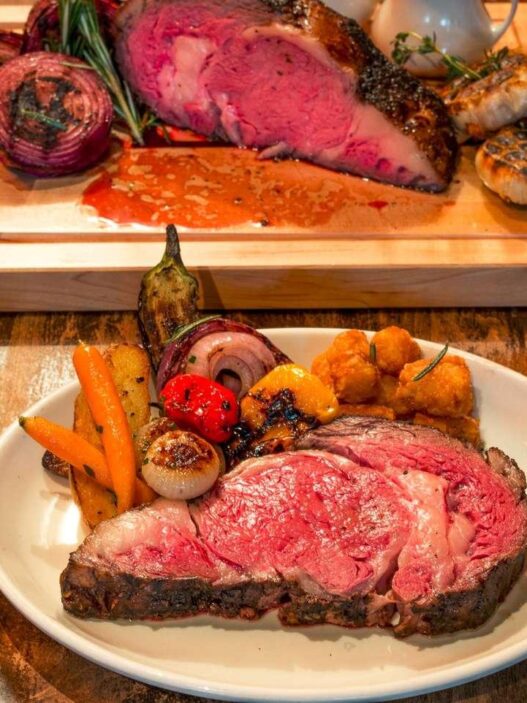Imagine a dish that captures the essence of comfort food in one pot, where chicken and rice come together with an abundance of vegetables like peas and carrots, all seasoned with a generous hand of garlic and onion. This is galinhada, a culinary gem from the Brazilian state of Minas Gerais.
In Brazilian culture, the concept of making the most out of your ingredients is not just a practice but a part of the dish’s identity. “Galinhada” literally means a group of chickens, but as my friend Tuzinho de Melo, who hails from Minas Gerais, explains, “the dish itself usually features just one chicken.” This single chicken, or galinha, is stretched to feed many, its flavors melding with rice and veggies to create a meal that’s both economical and incredibly satisfying.

The true essence of galinhada lies in its ability to transform a humble chicken into a feast, whether for hardworking farmhands, a family gathering, or to welcome a guest with a plate full of comfort. The simplicity of the dish means that the key to its success is in the layering of flavors and proper seasoning.
Pedro Ávila, another friend with roots in Minas, shared with me that “the magic is all in the salt, garlic, and onions.” To ensure I captured the spirit of galinhada correctly, I consulted both him and Tuzinho. They corrected a common mistake I made regarding the use of “açafrão,” which I thought was saffron but is actually “açafrão-da-terra” or turmeric, often mixed with annatto powder to give the rice its vibrant color.
Although these spices don’t contribute much in terms of flavor, the aromatic base of garlic and onions does, as does the crucial step of browning the chicken deeply. This process not only develops a rich, roasted flavor but also releases chicken fat that coats each grain of rice, ensuring every bite is infused with taste. Common additions like diced carrots, peas, bell peppers, and corn (the latter being less sweet than what we’re used to in the U.S., and listed as optional in my recipe) further enrich the dish.
Seasoning the rice correctly is also vital. In Brazil, many use tempero, a blend of seasonings akin to sofrito or sazón. Since tempero might not be readily available, I’ve opted for a generous amount of garlic, recommending chicken stock over water for added flavor, and pre-seasoning it with salt for even distribution. A dash of sweet paprika adds a subtle warmth, reminiscent of the flavors tempero would impart.
For the rice, I’ve chosen parboiled grains, which cook up plump yet separate, avoiding the dreaded “barroso” or sticky rice, as Tuzinho warns.
Ingredients:
- 2 cups homemade chicken stock or low-sodium broth (or water)
- 2 teaspoons Diamond Crystal kosher salt (adjust for table salt), plus more as needed
- 2 1/2 pounds chicken pieces (drumsticks and/or thighs)
- Freshly ground black pepper
- 1/4 cup canola or other neutral oil
- 1/2 teaspoon turmeric (optional)
- 2 teaspoons annatto powder
- 1 teaspoon sweet paprika
- 5 medium garlic cloves, very finely minced or pureed
- 1 large carrot, diced
- 1 medium yellow onion, diced
- 2 cups parboiled rice, washed and drained
- 5 ounces frozen peas (optional)
- 5 ounces frozen corn (optional)
- 1/2 cup thinly sliced scallion greens (dark and light green parts only)
Directions:
1、Prepare the Stock: Combine stock and salt in a large measuring cup, stirring until salt dissolves. Set aside.
2、Season and Brown the Chicken: Season chicken with salt and pepper. In a Dutch oven, heat oil over medium-high heat, add chicken, and cook until deeply browned, about 10 minutes. Reduce heat, add spices, garlic, carrot, and onion, seasoning with salt. Cook, stirring to release the fond, until vegetables soften, about 5 minutes.

3、Cook the Rice: Add rice, coating it in the oil and seasoning. Pour in the stock along with peas and corn (if using), ensuring all rice is submerged. Bring to a boil, then cover, reduce to low heat, and cook until the liquid is absorbed and rice is tender, approximately 25 minutes.

4、Finish and Serve: Remove from heat, stir in scallions, cover, and let stand for 10 minutes before serving. Enjoy this heartwarming dish that truly embodies the spirit of Brazilian home cooking.




















